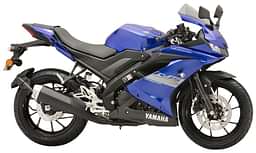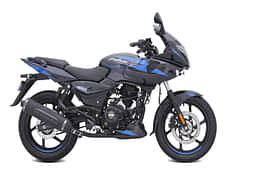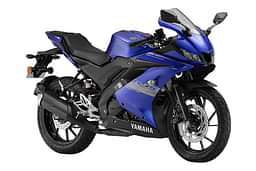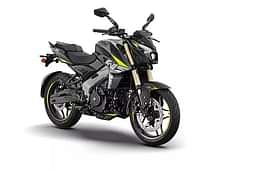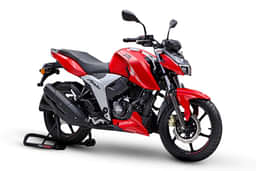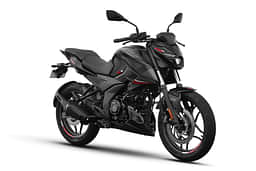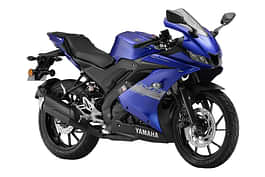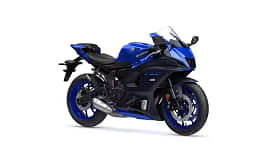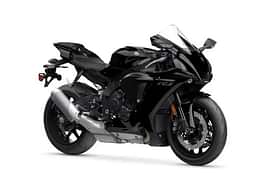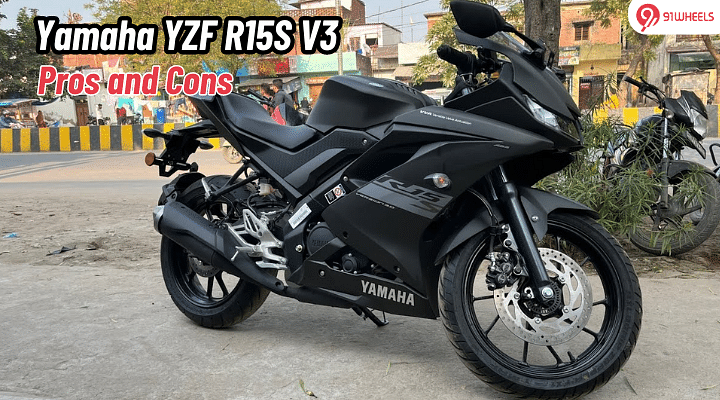
KEY HIGHLIGHTS
- The Yamaha YZF R15S V3, available in two colours, is priced at Rs 1.66 lakh (ex-showroom, Delhi).
- The Yamaha YZF R15S V3's single-cylinder, liquid-cooled, 155cc engine.
- It is India's only fully-faired 150-160cc motorcycle, apart from the Suzuki Gixxer SF.
- The unibody seat is more comfortable than the split seats the YZF R15 V3 had, but the difference is marginal.
When Yamaha brought the fourth-generation YZF R15 to the Indian shores, it also decided to keep the third-generation YZF R15 as a more affordable version. With this decision, the R15 V3 received a relatively more practical unibody seat, and that's how it was renamed the YZF R15S V3. The concept of the Yamaha R15S V3 with a unibody seat is not new, as Yamaha has done it before with the first-generation R15 and sold it as the R15S alongside the second-generation R15 V2. Does the Yamaha YZF R15S V3 make some sense as a 'more comfortable R15', or is it just pointless to exist alongside the R15 V4? We did an analysis, and here's what we found out. Before moving ahead, join our 91Wheels WhatsApp Community to stay updated on the latest automotive news.
Read more: Honda Hornet 2.0 Key Features Explained: Here's All You Get
2024 Yamaha YZF R15S V3 Pros
Still a fresh-looking motorcycle

The third-generation Yamaha R15 V3 has been on sale in India for more than seven years now, with the R15S V3 being nothing but the R15 V3 with a different seat. Despite its long existence, this entry-level sports bike still looks fresh and suitably sporty, staying true to its lineage.
Competition check: The Yamaha YZF R15S V3 has sportier bodywork inspired by the more powerful Yamaha superbikes. However, rivals like Bajaj Pulsar RS 200 and Hero Karizma XMR have their individualistic designs developed from scratch.
Sporty handling

Despite the seat change, the Yamaha YZF R15S V3 remains the same good-old third-generation YZF R15 V3. Its committed riding posture with lower-set clip-on handlebars and rear-set foot pegs, fine-tuned chassis, and sticky tyres make it a corner lover.
Competition check: The R15S V3 feels more agile in handling with a much sportier riding posture than the Hero Karizma XMR and Bajaj Pulsar RS 200.
Refined and powerful engine

Yamaha debuted the new-generation single-cylinder, liquid-cooled, 155cc engine with Variable Valve Actuation technology with the YZF R15 V3. This engine has stood the test of time and currently leads the 150-160cc engine category with its power and torque outputs while being supremely reliable in the long run.
Competition check: The R15S V3 claims 18.4 PS and 14.2 Nm, which makes it the most powerful 150-160cc engine. However, these figures are less than those of the similarly priced Karizma XMR and Pulsar RS 200.
Decent features

The 150-160cc category has already moved ahead in terms of features, and the Yamaha YZF R15S V3 has managed to keep up with the pace despite being essentially a seven-year-old motorcycle. The Yamaha YZF R15S V3 has modern features like LED headlamps and tail lamps, a full-LCD instrument console, clip-on handlebars, and a rear mono-shock.
Competition check: The Yamaha YZF R15S V3 offers more features than the Bajaj Pulsar RS 200 but lags marginally behind the Hero Karizma XMR, which gets more features.
2024 Yamaha YZF R15S V3 Cons
Uncomfortable for long riding hours

The new unibody seat is the most significant and only prominent update in the YZF R15S V3 over the previous-generation R15 V3. While Yamaha intends to position it as a more comfortable R15 with a unibody seat over split seats, the comfort levels remain unchanged.
Competition check: Unlike the Hero Karimza XMR and Bajaj Pulsar RS 200, which have split seats, the Yamaha YZF R15S V3 has a unibody seat.
Tiring riding posture for city riding

The Yamaha YZF R15S V3 excels at race tracks with its aggressive riding posture, which aids in its excellent handling characteristics. However, the same riding posture can be tiring, especially in stop-and-go city traffic.
Competition check: The riding posture of the R15S V3 is more oriented towards aggressive track-riding, compared to the slightly sport-touring ergonomics of Karizma XMR and Pulsar RS 200.
Steep pricing
The Yamaha YZF R15 has always been positioned as a premium offering with steeper pricing compared to other 150-160cc motorcycles, and the tradition continues with the YZF R15S V3. Its pricing brings it much closer to more powerful 200-250cc motorcycles, which offer faster acceleration and better performance at higher RPMs.
Competition check: The R15S V3 is priced at Rs 1.66 lakh, which is relatively lower than the Bajaj Pulsar RS 200 (Rs 1.73 lakh) and Hero Karizma XMR (Rs 1.81 lakh).
Read more: Bajaj Pulsar N150 Key Features Explained: Worth Buying?
Verdict
With the YZF R15S V3, Yamaha has tried to give customers an alternative to settle for a comparatively more comfortable motorcycle with its unibody seat over the YZF R15 V4. However, given the price difference between it and the newer YZF R15 V4 is not too significant, we recommend you go for the YZF R15 V4. The newer version might have slightly less comfortable seats. Still, this compromise feels pale in front of the advantages it offers, such as a more powerful engine, longer equipment list and fresher styling.
